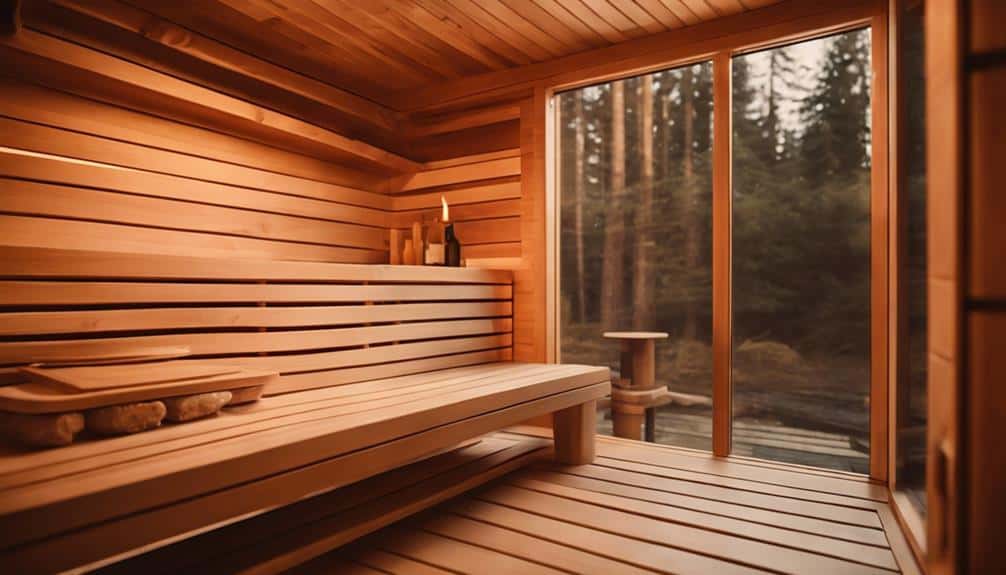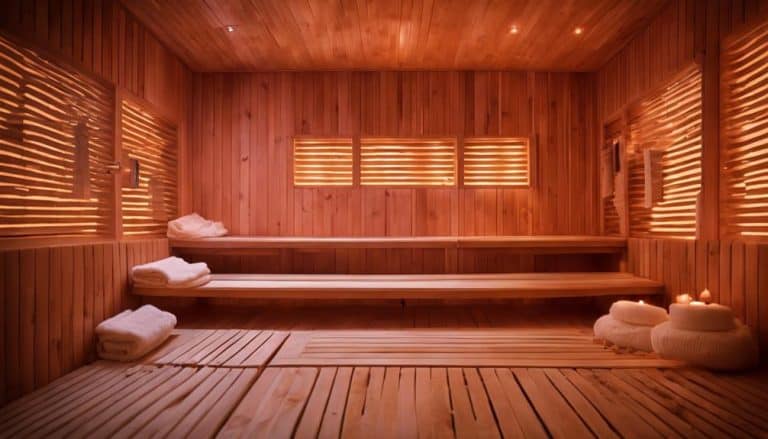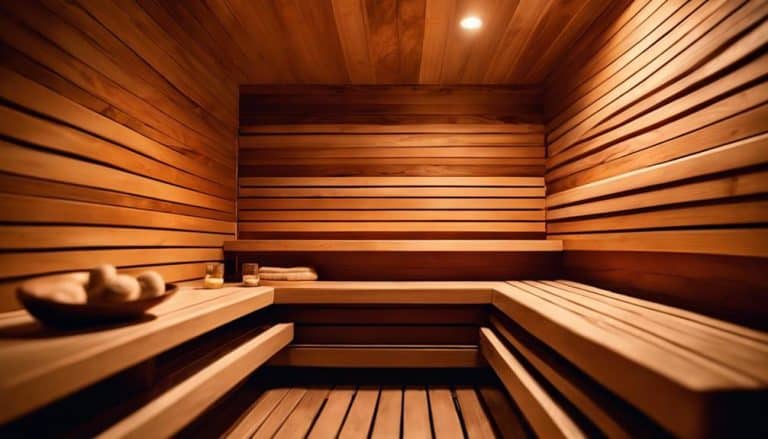Best Wood for Sauna Walls
As I sit here, pondering the best wood for sauna walls, I can't help but think of the options that lie before me, each like a unique piece of a puzzle waiting to be placed.
The choice of wood is crucial, as it can make or break the sauna experience. From the classic allure of Western Red Cedar to the enhanced beauty of thermally modified wood, there are several contenders vying for the title of the best wood for sauna walls.
So, which wood will reign supreme? Well, my friend, you'll have to stay tuned to find out.
Key Takeaways
- Western Red Cedar is recommended for its durability, insulation, aroma, and classic look.
- Hemlock wood ensures even heat distribution, affordability, durability, and a clean appearance.
- Aspen wood is cost-effective, water-resistant, aesthetically appealing, long-lasting, and low maintenance.
- Spruce wood is popular in European saunas for quality, durability, aesthetics, and a natural ambiance.
Cedar: The Ultimate Sauna Wood
Cedar is, without a doubt, the ultimate choice when it comes to selecting the perfect wood for sauna walls. Specifically, Western Red Cedar stands out as the recommended option due to its exceptional durability and resistance to decay. These qualities make it ideal for the high heat and humidity found in saunas.
One of the key reasons why cedar is favored for sauna walls is its excellent insulation properties. The low density of cedar wood allows it to retain heat effectively, ensuring that the sauna remains warm and comfortable. This is particularly important in creating a relaxing and therapeutic sauna experience.
In addition to its practical benefits, cedar also offers a pleasant aroma that enhances the overall ambiance of the sauna. The natural scent of cedar adds to the soothing atmosphere, creating a serene and inviting space to unwind and rejuvenate.
Furthermore, cedar's classic look and comfortable seating make it a popular choice for sauna walls. Its timeless appeal adds a touch of elegance to any sauna, while its smooth texture provides a comfortable surface to lean against or sit on.
Hemlock: A Popular Choice for Sauna Walls
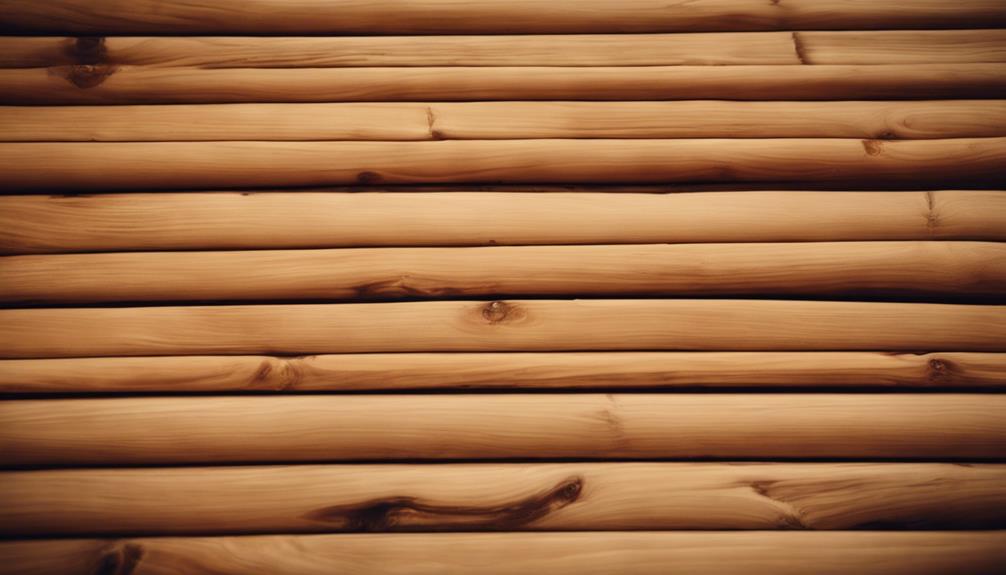
Hemlock has emerged as a popular choice for sauna walls, thanks to its moisture resistance, low resin content, and even heat distribution. Here are three key reasons why Hemlock is a reliable and affordable option for sauna walls:
- Moisture Resistance: Hemlock wood is naturally resistant to moisture, making it an excellent choice for sauna walls. It can withstand the high levels of humidity and temperature fluctuations commonly found in saunas without warping or deteriorating.
- Even Heat Distribution: One of the main benefits of using Hemlock for sauna walls is its ability to distribute heat evenly. This ensures a consistent and enjoyable sauna experience, as the heat is evenly dispersed throughout the space.
- Affordable and Durable: Hemlock wood isn't only affordable, but it's also highly durable. It can withstand the harsh conditions of the sauna environment, including high temperatures and moisture, without compromising its structural integrity. Additionally, Hemlock has a low resin content, reducing the risk of sap leakage and providing a clean and smooth appearance for the sauna walls.
Aspen: Affordable and Durable Wood for Saunas
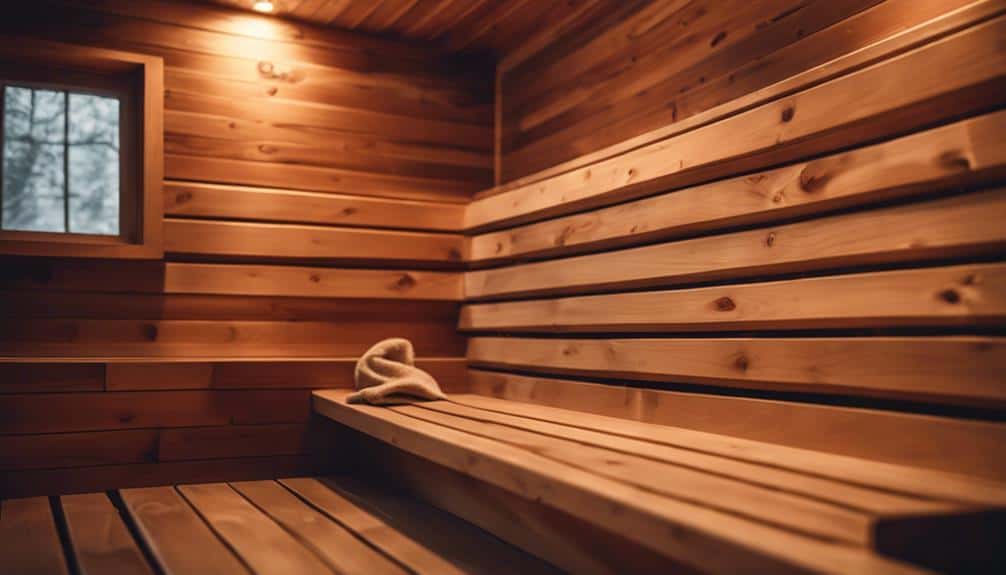
For those seeking an affordable and durable wood option for sauna walls, Aspen proves to be an excellent choice. Aspen is a cost-effective wood that offers both durability and value for sauna construction. Its light tone and smooth texture enhance the overall aesthetic appeal of the sauna, creating a welcoming and inviting atmosphere.
One of the key advantages of using Aspen for sauna walls is its resistance to water and moisture. This makes it an ideal choice for sauna environments, where high humidity and temperature fluctuations are common. Additionally, Aspen is commonly used for sauna benches due to its clean and bright appearance.
In terms of longevity, Aspen is a reliable and long-lasting wood option for sauna walls. It can withstand the harsh conditions of a sauna, ensuring that your sauna walls will remain in excellent condition for years to come. Its durability also means that it requires minimal maintenance, saving you both time and money.
Spruce: A Versatile Option for Sauna Walls
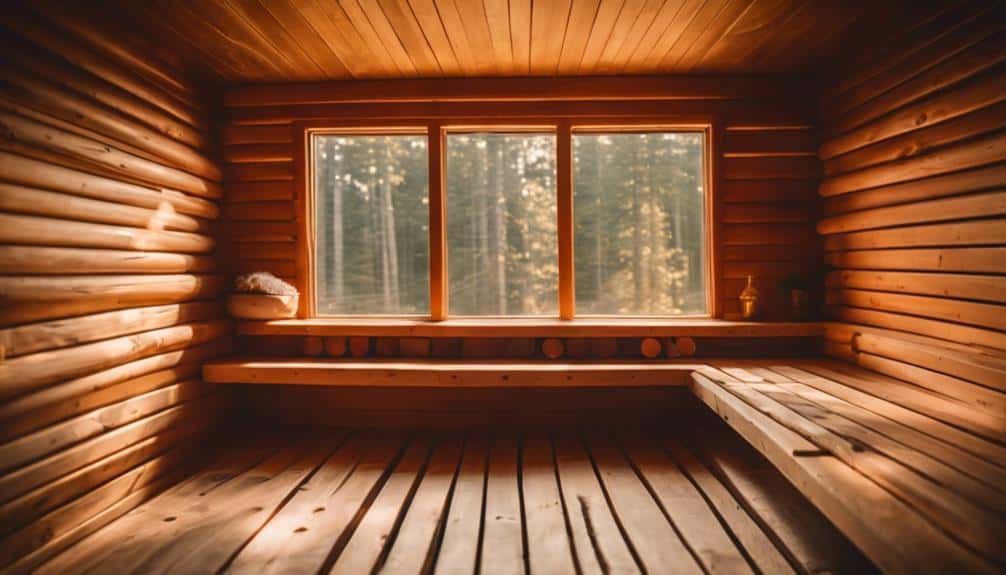
As we explore the versatility of wood options for sauna walls, one type that stands out for its durability and aesthetic appeal is Nordic Spruce. This high-density wood is known for its exceptional durability and ability to withstand the demanding conditions of sauna environments.
Here are three reasons why Nordic Spruce is an excellent choice for sauna walls:
- Thermal Modification: Nordic Spruce responds well to thermal modification, a process that enhances its heat resistance and moisture resistance. This makes it an ideal material for sauna walls that are exposed to high temperatures and humidity levels.
- European Saunas: Nordic Spruce is a popular choice in European saunas for its quality and aesthetic appeal. Its light color adds a natural and inviting ambiance to the sauna, while its therapeutic aroma enhances the overall sauna experience.
- Durability: With its high density, Nordic Spruce is highly resilient and can withstand the constant exposure to heat and moisture. This ensures that the sauna walls made from this wood will maintain their structural integrity and appearance for years to come.
Pine: Traditional and Cost-Effective Wood for Saunas
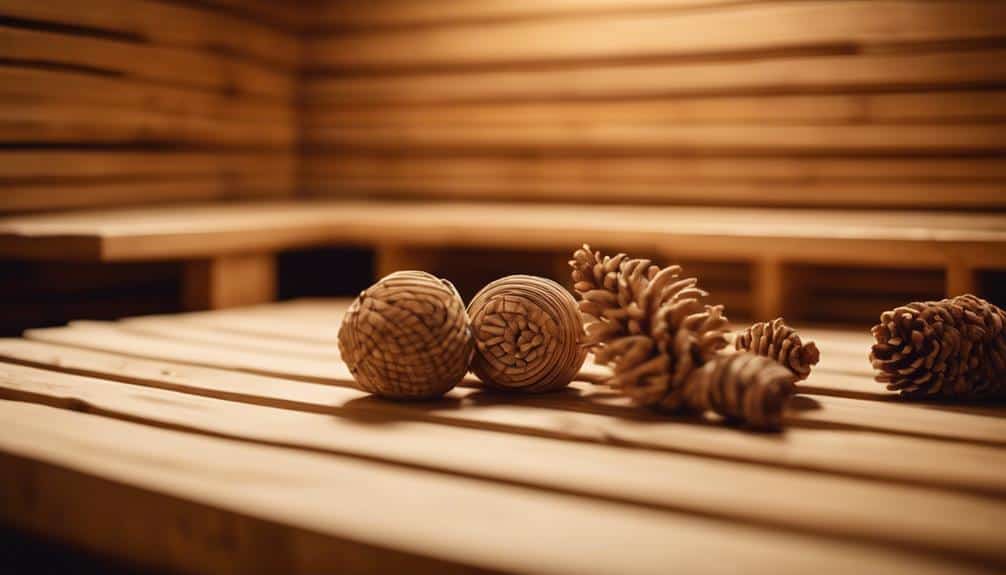
Pine, a traditional and cost-effective wood choice, offers a versatile option for sauna walls due to its affordability and ease of use in DIY sauna projects. As a softwood, it's easy to work with, making it a popular choice for those who want to build their own saunas. While pine may have knots, when properly sealed and maintained, it can provide a warm and inviting sauna atmosphere. One of the distinct features of pine wood is its natural aroma when heated, enhancing the overall sauna experience.
When considering pine for sauna walls, it's important to ensure proper ventilation and sealing to prevent moisture-related issues. Pine is more susceptible to moisture damage compared to other woods, so it's crucial to take necessary precautions. Adequate ventilation allows for air circulation, reducing the risk of mold or mildew growth. Sealing the wood with an appropriate sauna sealer helps protect it from moisture and prolong its lifespan.
Maintenance is also a key consideration when using pine for sauna walls. Regular cleaning and inspection are necessary to keep the wood in good condition. It's important to be mindful of any signs of wear or damage and address them promptly to ensure the longevity of the sauna.
Frequently Asked Questions
What Are the Benefits of Using Cedar as the Wood for Sauna Walls?
Using cedar for sauna walls offers numerous benefits. Cedar has unique properties, such as natural resistance to decay and a pleasant aroma. It adds aesthetic appeal, is long-lasting, and promotes health benefits. Additionally, cedar is sustainable, cost-effective, and requires minimal maintenance.
Can Hemlock Wood Withstand High Temperatures and Moisture in a Sauna?
Yes, hemlock wood can withstand high temperatures and moisture in a sauna. It is durable, heat resistant, and has good moisture resistance. Hemlock is a great option for sauna construction, offering various design choices. It is comparable to cedar, aspen, spruce, and pine.
Is Aspen Wood Resistant to Mold and Mildew in a Sauna Environment?
Aspen wood is highly resistant to mold and mildew in the sauna environment. While cedar walls offer additional benefits, such as durability and moisture resistance, aspen wood can be a suitable alternative.
Can Spruce Wood Be Easily Maintained and Repaired in a Sauna?
Oh, spruce wood, the epitome of low maintenance and easy repairs in a sauna. Its durability, moisture and temperature resistance, mold resistance, and affordability make it the perfect choice. Plus, its aesthetic is just stunning. And let's not forget how readily available and sustainable it is.
How Does Pine Wood Compare to Other Types of Wood in Terms of Cost and Durability for Sauna Walls?
Pine wood is a cost-effective option for sauna walls, but it may not be as durable as cedar. Moisture can affect its lifespan, so proper maintenance is crucial. Consider other wood types for better longevity and thermal properties.
Conclusion
In conclusion, when it comes to choosing the best wood for sauna walls, Western Red Cedar stands out as the ultimate choice. Its durability, resistance to warping and cracking, and classic sauna look make it a popular option.
Additionally, the pleasant aroma of cedar adds to the overall sauna experience. Just like the comforting warmth of a sauna, the use of quality cedar walls creates a calming atmosphere that allows for relaxation and rejuvenation.

